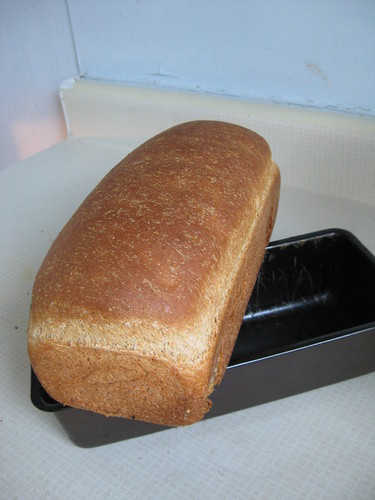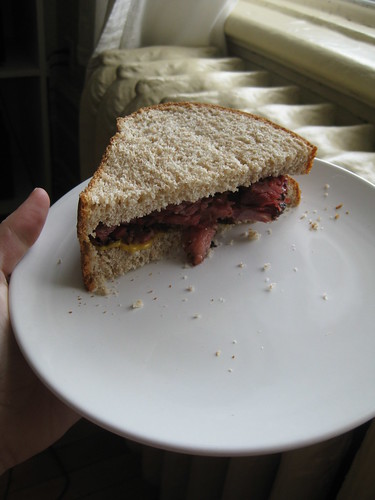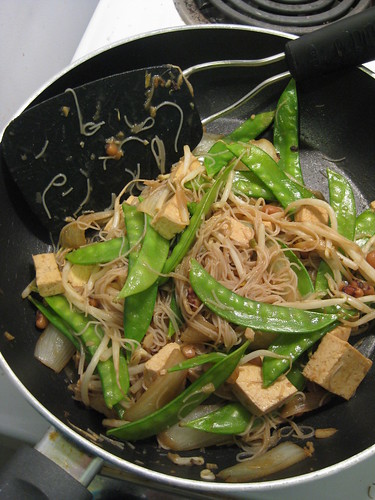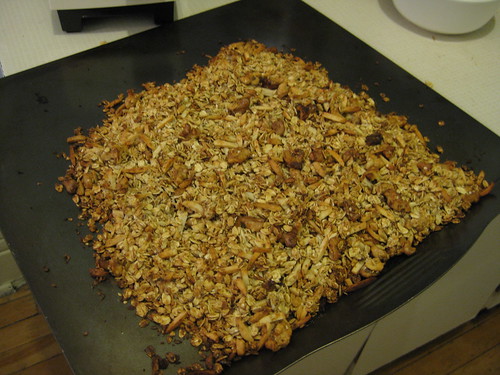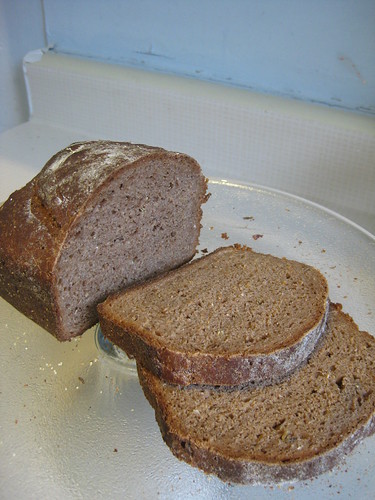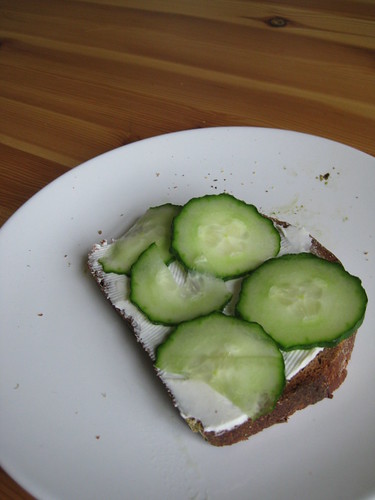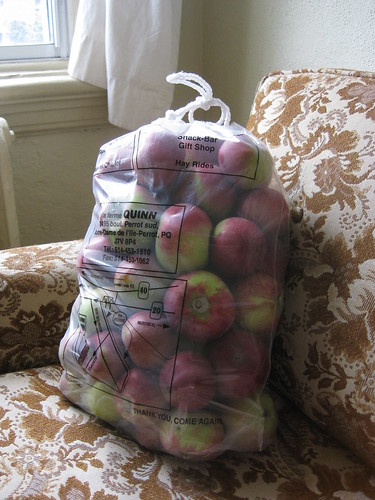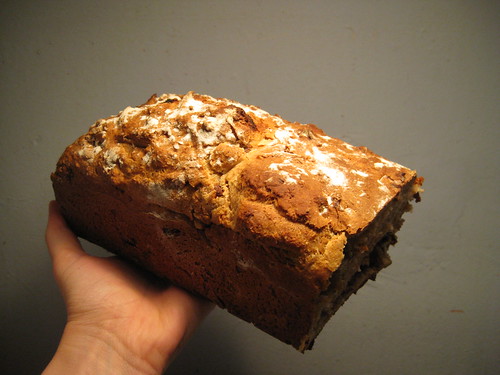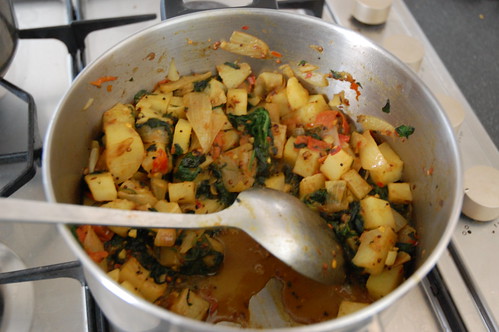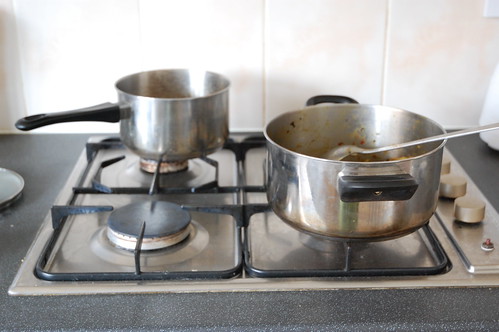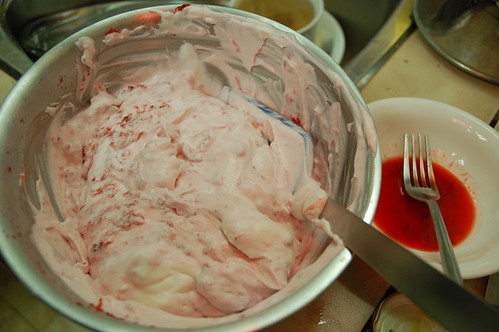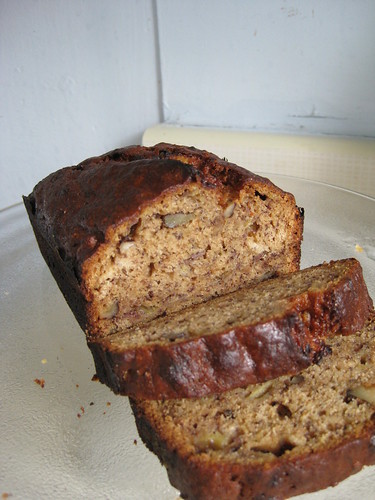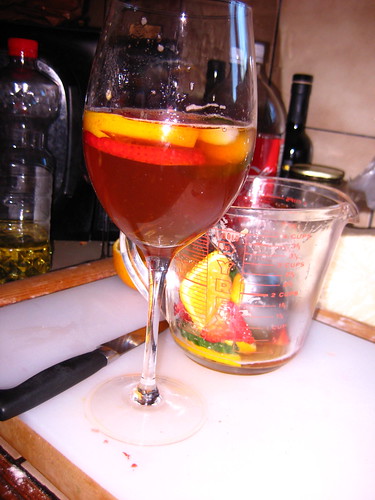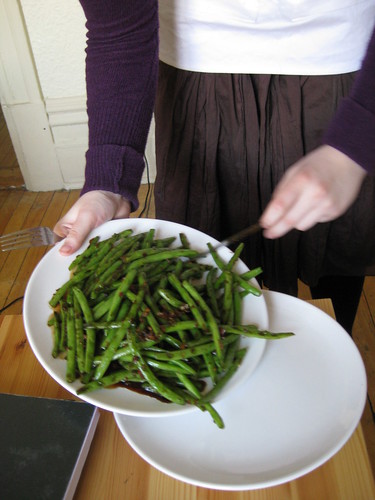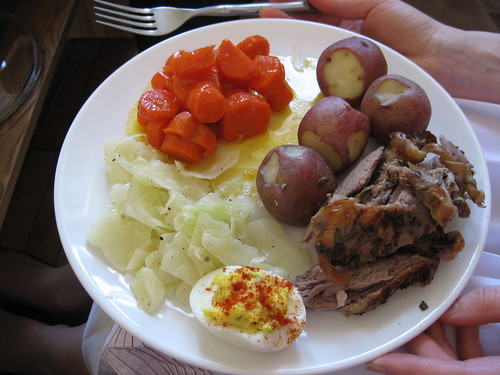In this round I just wanted something quick and snack-y. Cookies were the obvious choice. A quick survey of my pantry showed slim pickings: I was completely out of eggs and butter, and running low on flour. The best I could find was about 1/3 cup peanut butter, brown sugar, and flax seeds. Immediately I recalled a recipe I'd seen on the back of a peanut butter jar at work: "1 cup peanut butter, 1 cup sugar, 1 egg. Mix and bake."
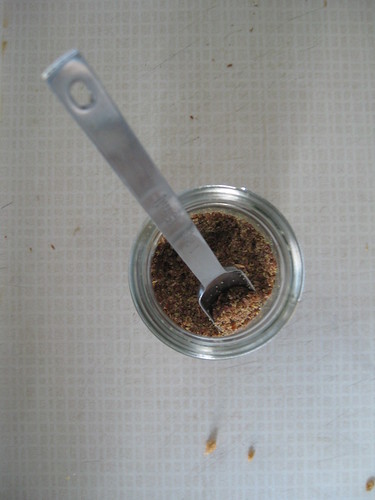
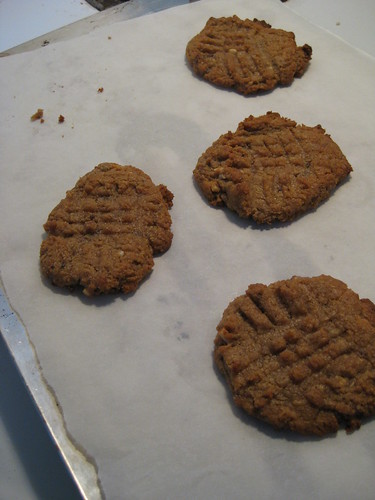 *
*To replace the egg, I ground up some flax seeds using Zoe's pestle and mortar (thanks, gurl). In general, one whole egg can be replaced by 1 tbsp flax seeds + 3 tbsp water. Mix the ground seeds and water in a small bowl, then let them sit for a few minutes. The mixture should become slightly gelatinous, kind of like an egg white. Then you can add it to the cookie batter as you would a normal egg. It worked perfectly... so perfectly that I ground up plenty of extra seeds to use in the future (I store the ground flax seed in my fridge). So I might not ever buy eggs again (flax seeds are significantly cheaper).
The best thing about replacing eggs with ground flax seeds is that you can easily reduce recipes to half-size or one-third-size without worrying about that awkward half- or one-third-egg.
Recipe: five peanut butter cookies
1/3 cup peanut butter
1/3 cup sugar (brown sugar works fine)
1/3 tablespoon (= 1 teaspoon) ground flax seed
1 tablespoon water
a few drops of vanilla (optional)
- Mix the ground flax seed and water in a small bowl as described above.
- Combine the peanut butter, sugar and vanilla in a bowl. Once the flax seed mixture has reached the proper consistency, mix it in, too.
- Spoon the dough (in balls) onto a baking sheet lined with parchment paper.
- Flatten the dough balls using a fork. You should press the dough twice with the fork, making a criss-cross pattern (see photo).
- Bake at 350 degrees F for about ten minutes, or until the cookies begin to brown on the bottoms. Wait until the cookies are cool before eating or removing from the pan. Otherwise they will be too soft!
The recipe made five cookies. Total preparation and cooking time was only 20 minutes!
*These have a darker color due to the brown sugar.
